Audiologists and Hearing Instrument Specialists
Audiologists and hearing instrument specialists play a crucial role in ordering hearing instruments with telecoils and Auracast in the device itself, as well as educating their patients about how these devices connect in public and private settings. Providers give patients access to what the ADA mandates (hearing access). Providers are in effect gatekeepers that give their patients access to what is legally theirs – access to ADA-mandated assistive listening systems.
Below is information, tools, articles, and research articles about assistive listening systems (hearing loops, FM/RF, and infrared) selected for professionals.

“The observed improvements in signal-to-noise ratio (SNR), ranging from approximately 5 to 30 dB, highlight the substantial benefits these technologies offer individuals who use hearing instruments in real-world listening situations.”
Burwinkel, Justin R., et al. “Hearing Loops and Induction Coils: Improving SNR in Public Spaces.” Hearing Review 31, no. 2 (February 2024): 22–25.
Tools
How the hyperlinks work:
- image or title -> opens a new webpage with more information
- download icon at bottom -> direct download or webpage
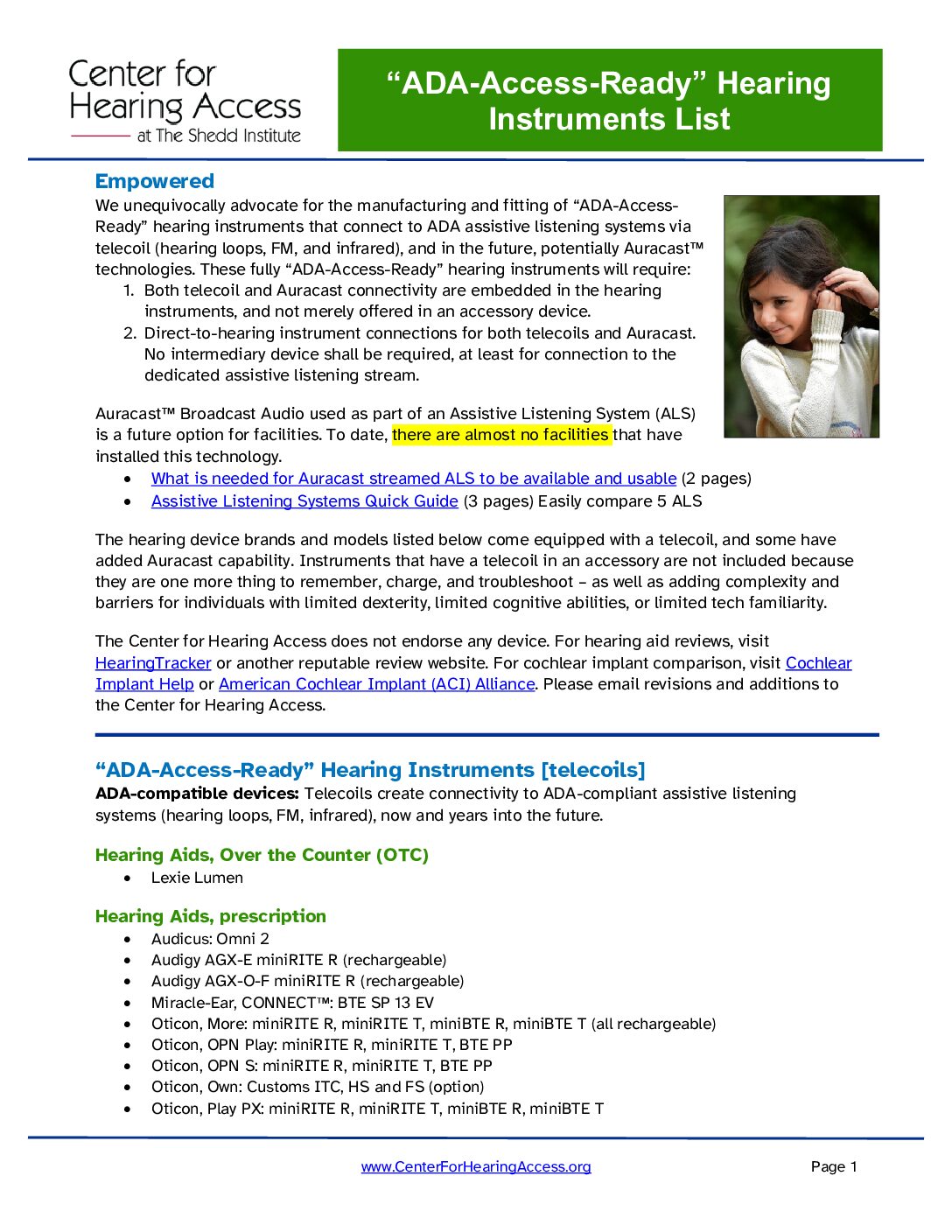

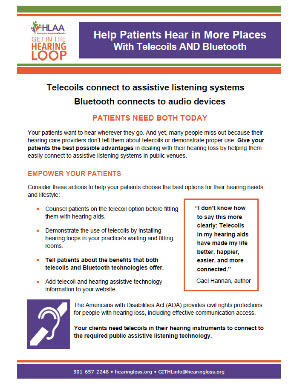
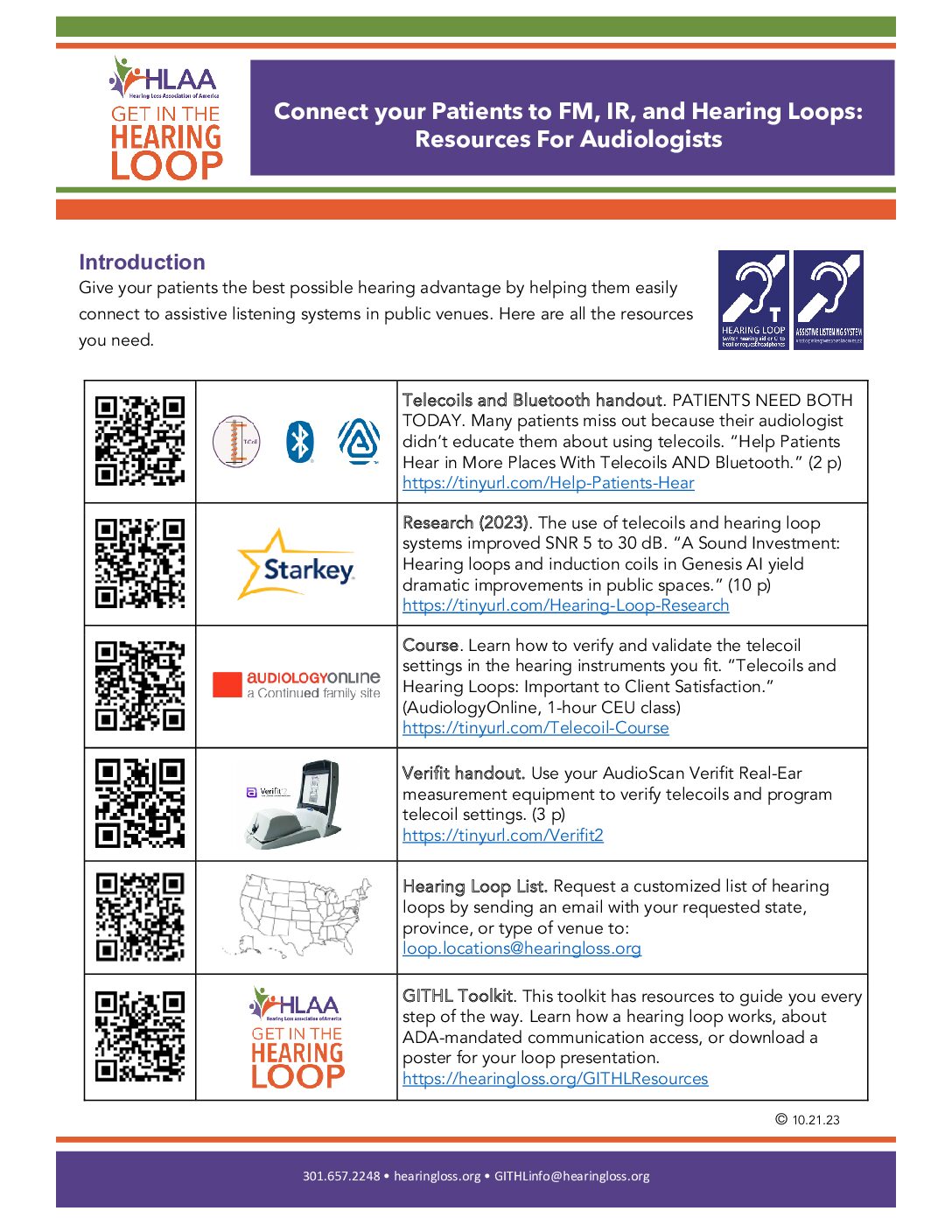
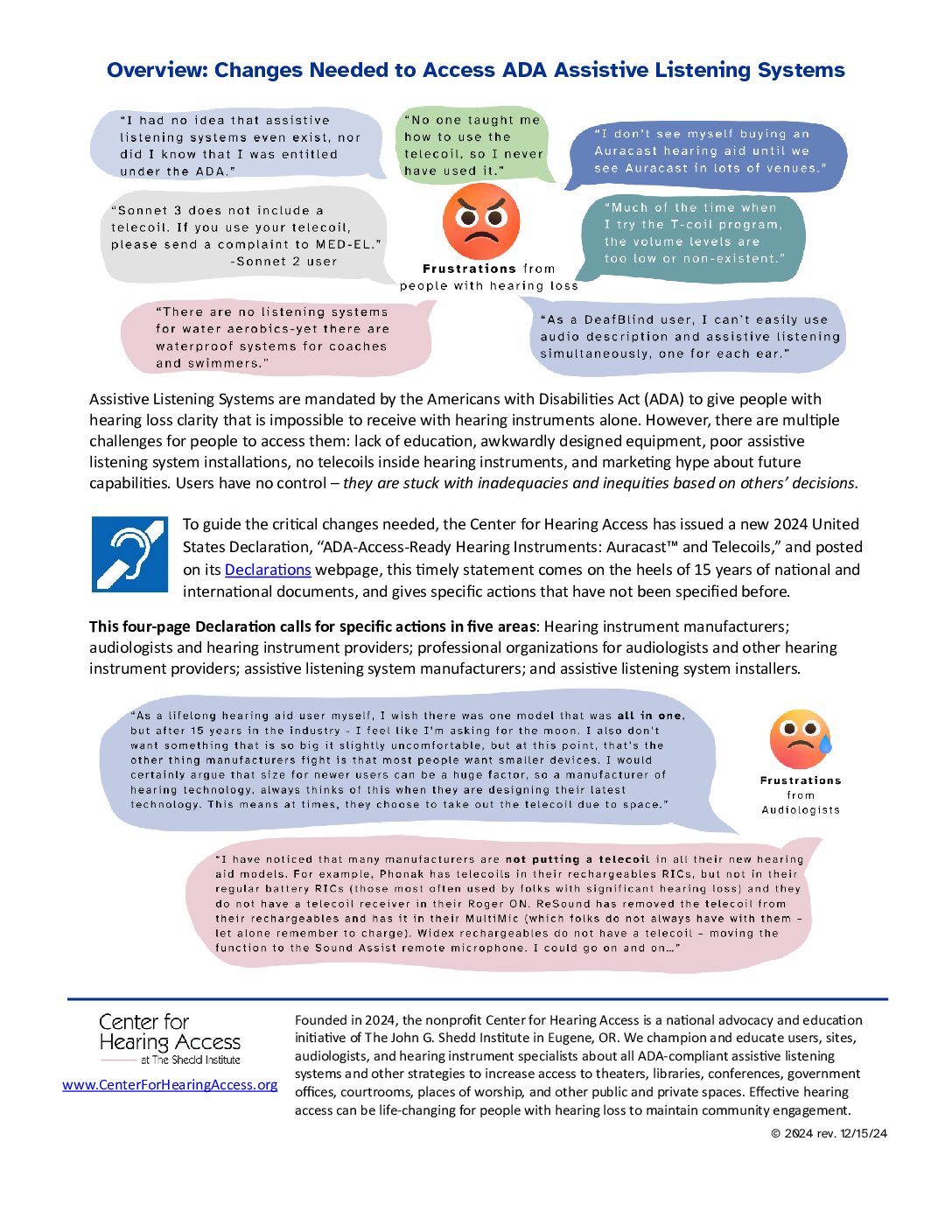


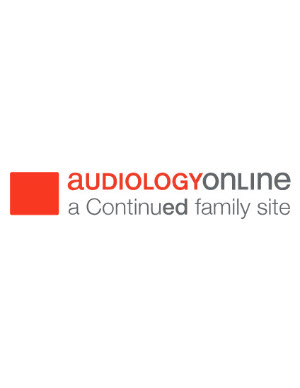
Persons with hearing loss frequently need a +10dB signal-to-noise ratio or greater because the loss of hearing is also associated with the brain’s neurological processing of information. Speech that is unfamiliar, fast spoken or without the use of visual clues (because of great distances in a worship area) will quickly affect this person’s ability to follow the message, resulting in the typical complaint: “I can hear but I cannot understand.”
When the signal-to-noise ratio drops below +6dB most persons with normal hearing can apply some effort to fully understand and follow the message. Users of even the most advanced digital hearing instruments will have to now apply so much effort that this level of attention and concentration can not be sustained for very long. The person with hearing loss will either give up trying (“I just can’t hear in church”) or worse yet: They stop attending services.
Hearing loops take the desired speech signal straight from the basic source (the microphone) and broadcast directly to the listener’s hearing aids. The signal at the listener’s ears is free from distance issues, reverberation and ambient noise interference. The SNR is now easily +15dB or +20dB and the person’s response usually is: “I can finally hear the sermon again.” But what they are really saying is that the speech is now intelligible enough to be understood.
Juliëtte Sterkens, AuD
Resources
- 16 years of international declarations and statements about telecoils, Bluetooth, and Auracast (this website).
- Are you a Paramecium Racer? An acronym points the way forward in hearing care. Sara Bloom, The Hearing Journal. September 2010. “Of all those interviewed for this article, Sergei Kochkin, PhD, executive director of the Better Hearing Institute, is the most critical of the incompetence he sees as insidious throughout the industry. He believes that many hearing aids are not fitted properly; that based on letters he receives, discomfort and dissatisfaction among patients are rampant; and that the benefit of amplification when not properly fitted is often minimal. “Upgrade your skills,” Kochkin urges, calling on the professional organizations to police their members and audit their practices.” (5 pages, pdf)
- New York, Hearing Aid Dispensers and Licensed Audiologists registered as Hearing Aid Dispensers must complete one hour of continuing education on the “topic of telecoil (t-coil) and other assistive listening devices“
- Verifit 2 manual Feb 2023 (199 pages, pdf)
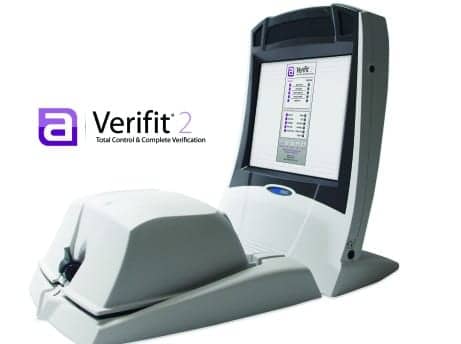
AAA (American Academy of Audiology)
- Audiology’s Threatened Autonomy May Be Self-Inflicted: Opinion Editorial, by John Greer Clark, AAA, May 13, 2019 (webpage)
- Telecoil Fact Sheet – Connecting directly to Sound Still True (AAA, 1 page, pdf)
- AAA and HLAA press release “Get in the Hearing Loop” campaign promotes doubling functionality of hearing aids” 2010 (1 page, pdf)
Zotero online library
- Zotero online library (CEU & training)
- Zotero online library (Provider) 80+ items
- Zotero online library (Standards and Best Practices)
- Zotero online library (Research)
- Zotero online library (Starkey research)
“Our audiologic practice delivered over 90 percent of all hearing aids with t-coils installed. Our patients benefit because the person speaking is broadcast directly to their ears. Our practice benefits from hugs, excited stories and tears of happiness. People are often referred for demonstration with the admonition, ‘You have to hear it!’ Never in my audiology career has something so simple helped so many people at so little cost.”
Jerry Owens, MA, CCC-A, former owner, Lakeshore Hearing Centers, Holland, MI
“Telecoils transform hearing aids into ‘personal communication systems,’ reducing the stigma of hearing loss and replacing it with successful and less stressful communication between patients and their families and friends. I am glad to be a part of an initiative that makes such a significant difference in someone’s ability not only to communicate, but to participate!”
Karen Van Doorne, MA, CCC-A, FAAA, former owner, K. A. Van Doorne & Associates, Zeeland, MI
